AMD Teases FSR 3 and Hypr-RX: Updated Radeon Performance Technologies Available in September
by Ryan Smith on August 25, 2023 11:31 AM EST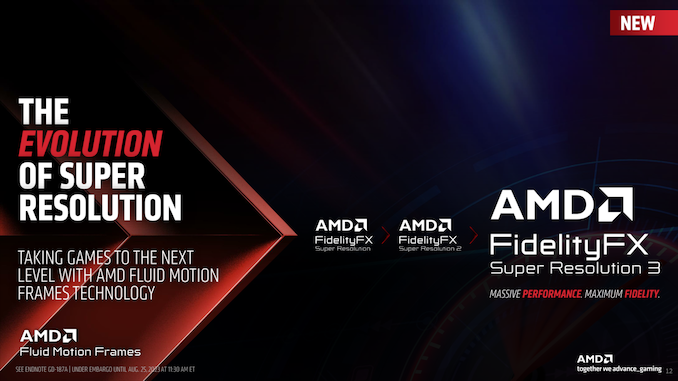
Alongside this morning’s announcement of the new Radeon RX 7800 XT and RX 7700 XT video cards, AMD is also using their Gamescom launch event to deliver an update on the state of their Radeon software stack. The company has been working on a couple of performance-improvement projects since the launch of the Radeon RX 7000 series in late 2022, including the highly anticipated FSR 3, and they’re finally offering a brief update on those projects ahead of their September launches.
FSR 3 Update: First Two Games Available in September
First and foremost, AMD is offering a bit of a teaser update on Fidelity FX Super Resolution 3 (FSR 3), their frame interpolation (frame generation) technology that is the company’s answer to NVIDIA’s DLSS 3 frame generation feature. First announced back at the Radeon RX 7900 series launch in 2022, at the time AMD only offered the broadest of details on the technology, with the unspoken implication being that they had only recently started development.
At a high level, FSR 3 was (or rather, will be) AMD’s open source take on frame interpolation, similar to FSR 2 and the rest of the Fidelity FX suite of game effects. With FSR 3, AMD is putting together a portable frame interpolation technique that they’re dubbing “AMD Fluid Motion Frames” and, unlike DLSS, is not vendor proprietary and can work on a variety of cards from multiple vendors. Furthermore, the source code for FSR3 will be freely available as part of AMD’s GPUOpen community.
Since that initial announcement, AMD has not had anything else of substance to say on the state of FSR 3 development. But at last, the first shipping version of FSR 3 is in sight, with AMD expecting to bring it to the first two games next month.
Ahead of that launch, they are offering a small taste of what’s to come, with some benchmark numbers for the technology in action on Forspoken. Using a combination of Fluid Motion Frames, Anti-Lag+, and temporal image upscaling, AMD was able to boost 4K performance on Forspoken from 36fps to 122fps.
Notably, AMD is using “Performance” mode here, which for temporal upscaling means rendering at one-quarter the desired resolution of a game – in this case, rendering at 1080p for a 4K/2160p output. So a good deal of the heavy lifting is being done by temporal upscaling, but not all of it.
AMD has also published a set of numbers without temporal upscaling, using their new native anti-aliasing mode, which renders at the desired output resolution and then uses temporal techniques for AA, and combines that with Fluid Motion Frames. In that case, performance at 1440p goes from 64fps to 106fps.
For the time being, these are the only two sets of data points AMD is providing. Otherwise, the screenshots included in their press deck are not nearly high enough in quality to make any kind of meaningful image quality comparisons, and AMD hasn’t published any videos of the technology in action. So convincing visual evidence of FSR 3 in action is, at least ahead of today’s big reveal, lacking. But it is a start none the less.
As for the technical underpinnings, AMD has answered a few questions relating to FSR3/Fluid Motion Frames, but the company is not doing a deep dive on the technology at this time. So there remains a litany of unanswered questions about its implementation.
With regards to compatibility, according to AMD FSR3 will work on any RDNA (1) architecture GPU or newer, or equivalent hardware. RDNA (1) is a DirectX Feature Level 12_1 architecture, which means equivalent hardware spans a pretty wide gamut of hardware, potentially going back as far as NVIDIA’s Maxwell 2 (GTX 900) architecture. That said, I suspect there’s more to compatibility than just DirectX feature levels, but AMD isn’t saying much more about system requirements. What they are saying, at least, is that while it will work on RDNA (1) architecture GPUs, they recommend RDNA 2/RDNA 3 products for the best performance.
Along with targeting a wide range of PC video cards, AMD is also explicitly noting that they’re targeting game consoles as well. So in the future, game developers will be able to integrate FSR3 and have it interpolate frames on the PlayStation 5 and Xbox Series X|S consoles, both of which are based on AMD RDNA 2 architecture GPUs.
Underpinning FSR 3’s operation, in our briefing AMD made it clear that it would require motion vectors, similar to FSR 2’s temporal upscaling, as well as rival NVIDIA’s DLSS 3 interpolation. The use of motion vectors is a big part of why FSR 3 requires per-game integration – and a big part of delivering high quality interpolated frames. Throughout our call “optical flow” did not come up, but, frankly, it’s hard to envision AMD not making use of optical flow fields as well as part of their implementation. In which case they may be relying on D3D12 motion estimation as a generic baseline implementation, since it wouldn’t require accessing each vendor’s proprietary integrated optical flow engine.
What’s not necessary, however, is AI/machine learning hardware. Since AMD is targeting the consoles, they wouldn’t be able to rely on it anyhow.
AMD also says that FSR 3 includes further latency reduction technologies (which are needed to hide the latency of interpolation). It’s unclear if this is something equivalent to NVIDIA’s Reflex marker system, or if it’s something else entirely.
The first two games to get FSR 3 support will be the aforementioned Forspoken, as well as the recently launched Immortals of Aveum. AMD expects FSR 3 to be patched in to both games here in September – presumably towards the later part of the month.
Looking farther forward, AMD has lined up several other developers and games to support the technology, including RPG-turned-technology-showcase Cyperpunk 2077. Given that Forspoken and Immortals of Aveum are essentially going to be the prototypes for testing FSR 3, AMD isn’t saying when support for the technology will come to these other games. Though with plans to make it available soon as an Unreal Engine plugin, the company certainly has its eyes on enabling wide-scale deployment of the technology over time.
For now, this is only a brief teaser of details. I expect that AMD will have a lot more to say about FSR 3, and to disclose, once the FSR 3 patches for Forspoken and Immortals of Aveum are ready to be released.
Hypr-RX: Launching September 6th
Second up, we have Hypr-RX. AMD’s smorgasbord feature combines the company’s Radeon Super Resolution (spatial upscaling), Radeon Anti-Lag+ (frame queue management), and Radeon Boost (dynamic resolution scaling). All three technologies are already available in AMD’s drivers today, however they can’t all currently be used together. Super Resolution and Boost both touch the rendering resolution of a game, and Anti-Lag steps on the toes of Boost’s dynamic resolution adjustments.
Hypr-RX, in turn, is designed to bring all three technologies together to make them compatible with one another, and to put the collective set of features behind a single toggle. In short, if you turn on Hypr-RX, AMD’s drivers will use all of the tricks available to improve game performance.
Hypr-RX was supposed to launch by the end of the first half of the year, a date that has since come and gone. But, although a few months late, AMD has finally finished pulling together the feature, just in time for the Radeon RX 7800 XT launch.
To that end, AMD will be shipping Hypr-RX in their next Radeon driver update, which is due on September 6th. This will be the launch driver set posted for the RX 7800 XT, bringing support for the new card and AMD’s newest software features all at once. On that note, it bears mentioning that Hypr-RX requires an RDNA 3 GPU, meaning it’s only available for Radeon RX 7000 video cards as well as the Ryzen Mobile 7040HS CPU family.
Taking a quick look at performance, AMD has released some benchmark numbers showing both the latency and frame rates for several games on the RX 7800 XT. In all cases latency is down and framerates are up, varying on a game-by-game basis. As these individual technologies are already available today, there’s not much new to say about them, but given the overlap in their abilities and the resulting technical hurdles, it’s good to see that AMD finally has them playing nicely together.
But with FSR 3 and its frame interpolation abilities soon to become available, AMD won’t be stopping there for Hypr-RX. The next item on AMD’s to-do list is to add Fluid Motion Frame support to Hypr-RX, allowing AMD’s drivers to use frame interpolation (frame generation) to further improve game performance.
This is a bigger and more interesting challenge than it may first appear, because AMD is essentially promising to (try to) bring frame interpolation to every game on a driver level. FSR 3 requires that the technology be built in to each individual game, in part because it relies on motion vector data. That motion vector data is not available to driver-level overrides, which is why Hypr-RX’s Radeon Super Resolution ability is only a spatial upscaling technology.
Put another way: AMD apparently thinks they can do frame interpolation without motion vectors, and still achieve a good enough degree of image quality. It’s a rather audacious goal, and it will be interesting to see how it turns out in the future.
Wrapping things up, AMD’s current implementation of Hypr-RX will be available on September 6th as part of their new driver package. Meanwhile Hypr-RX with frame interpolation is a work in progress, and will be coming at a later date.


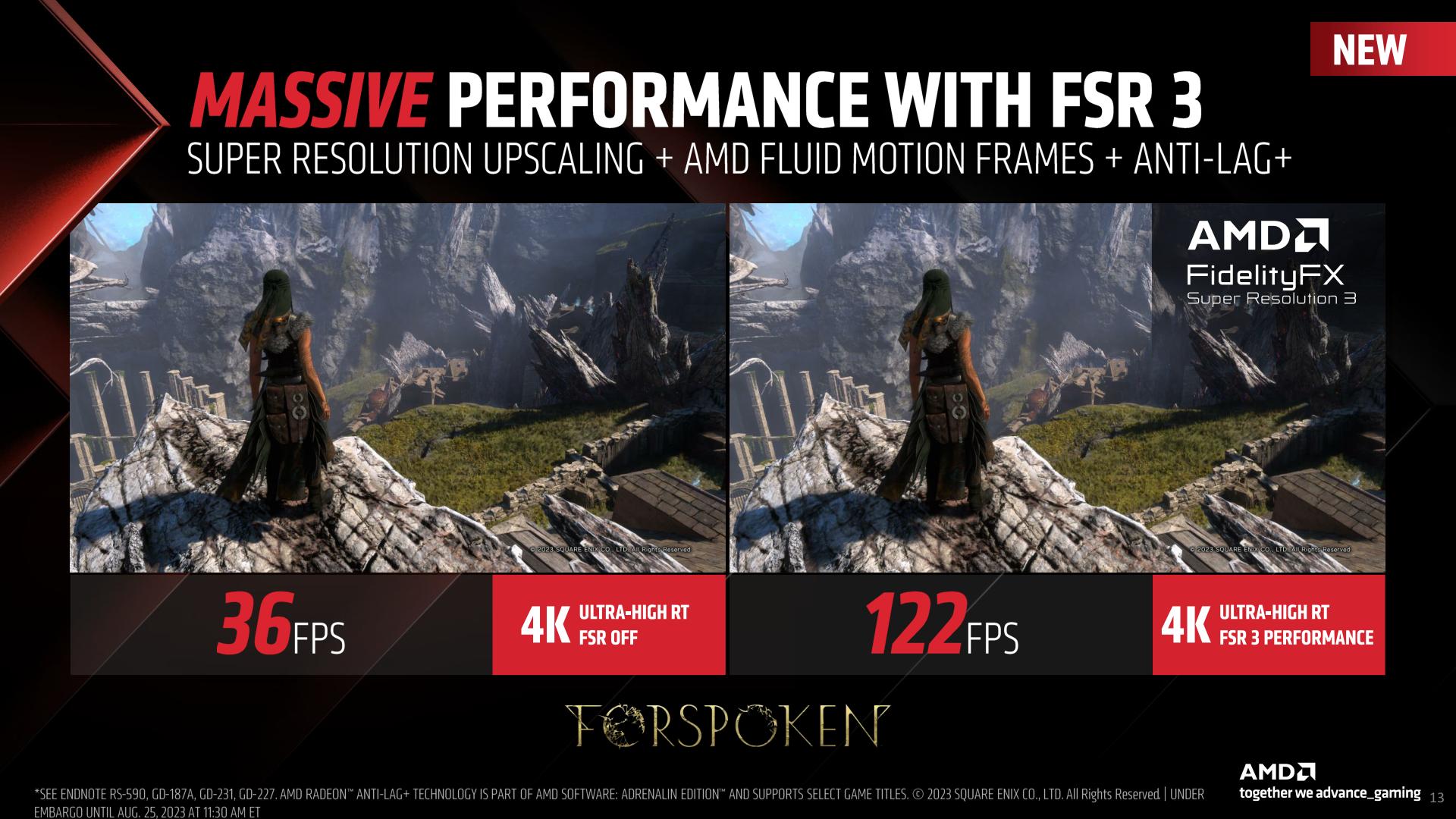
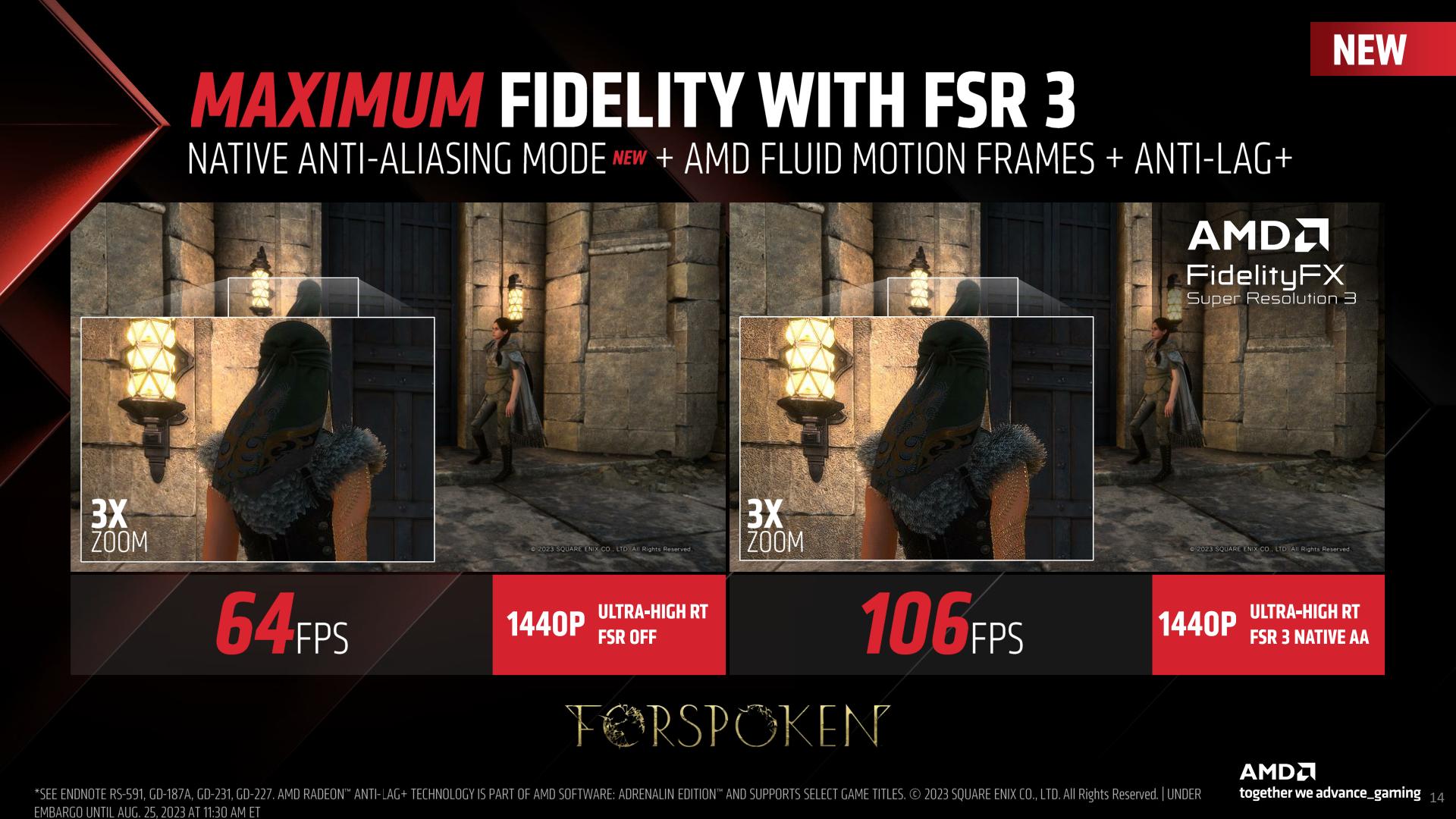
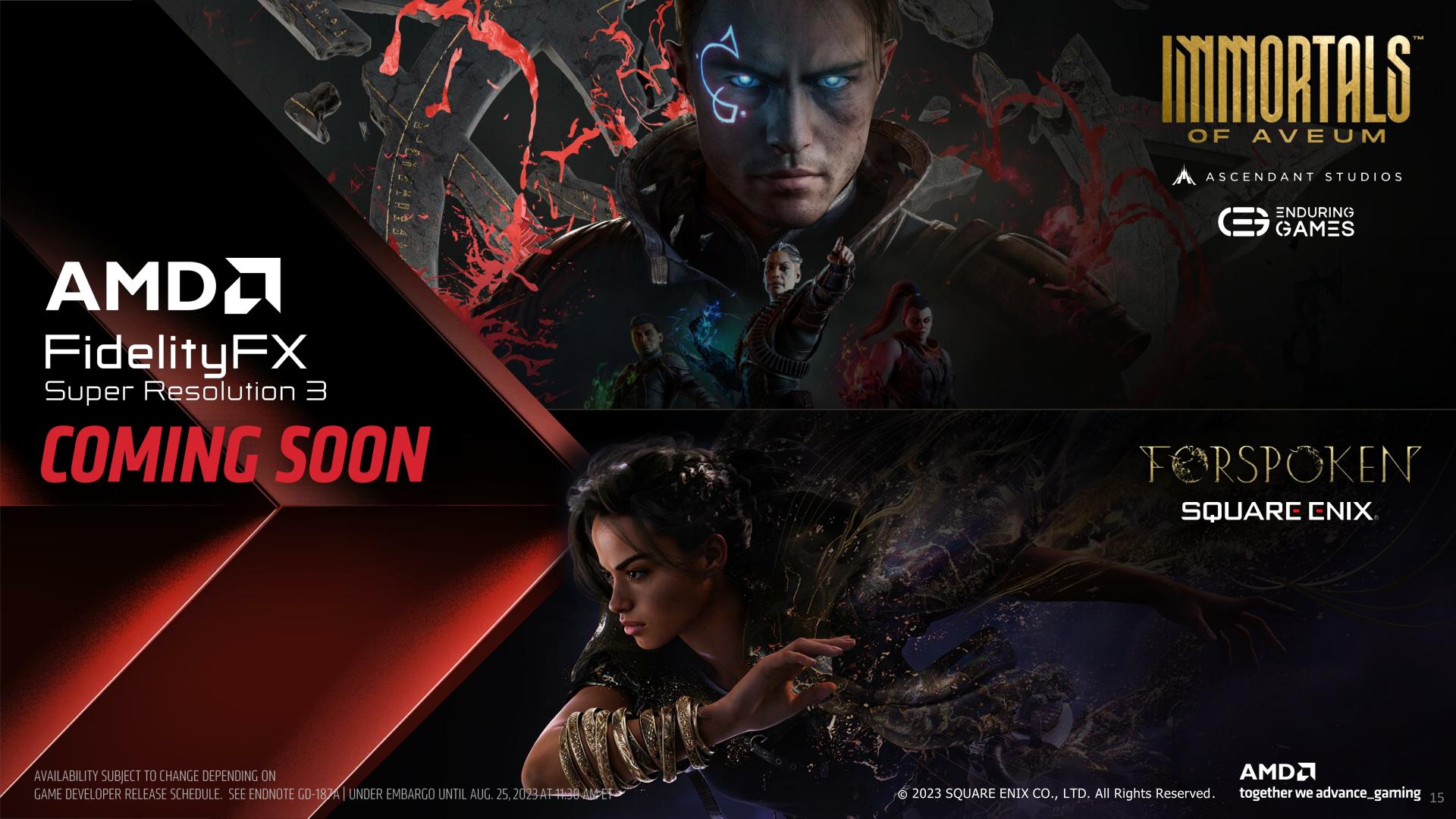
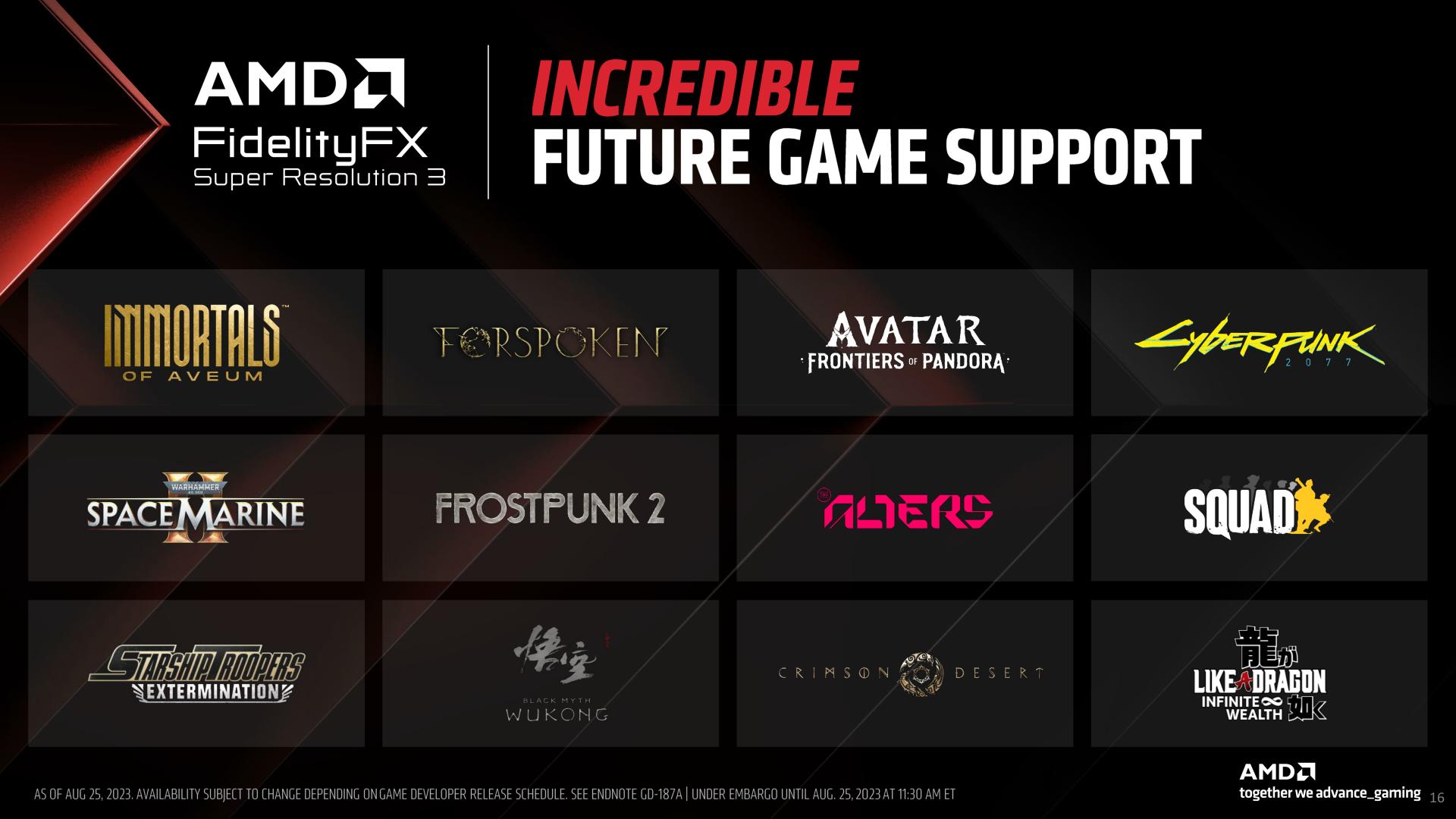
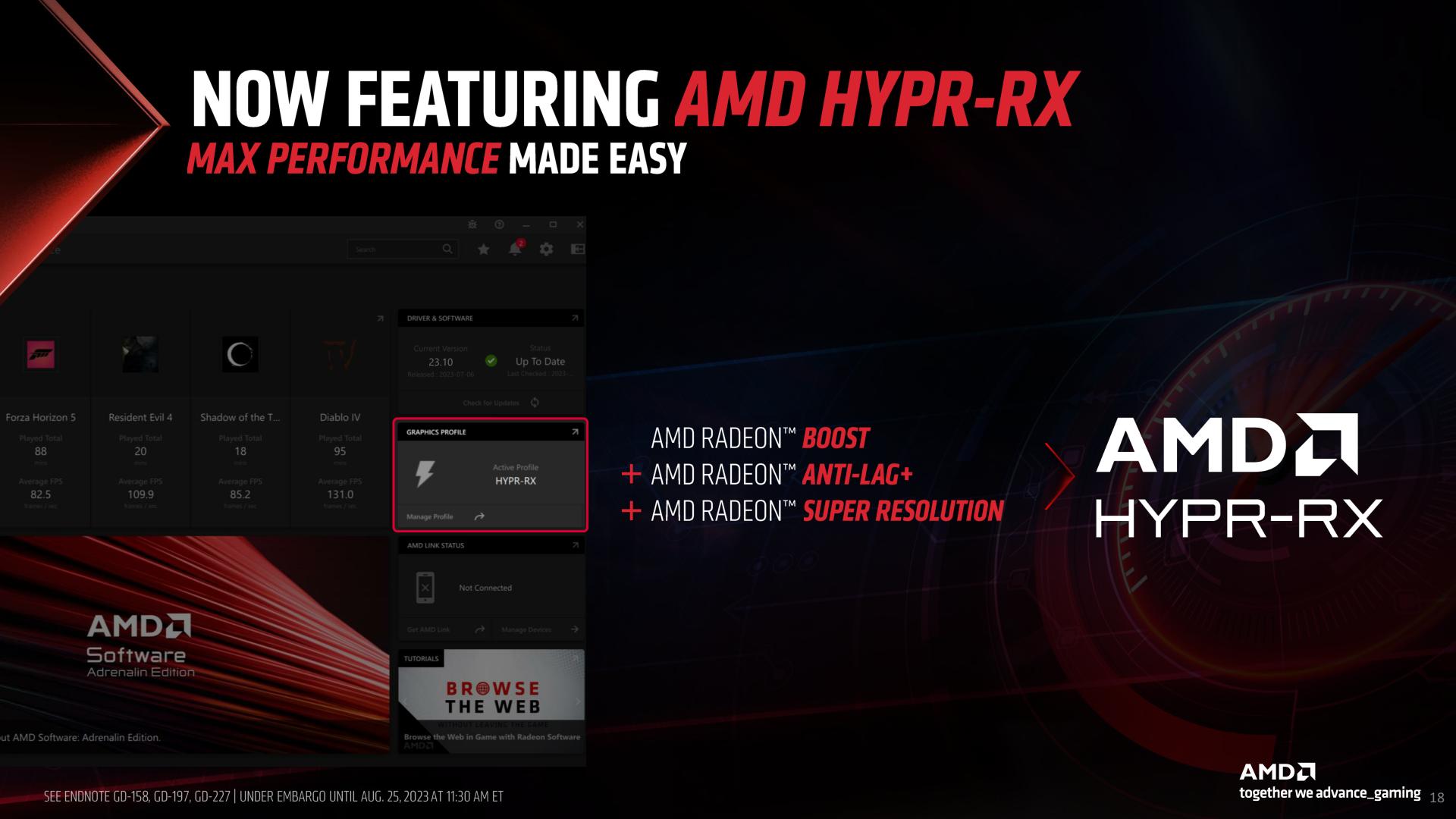
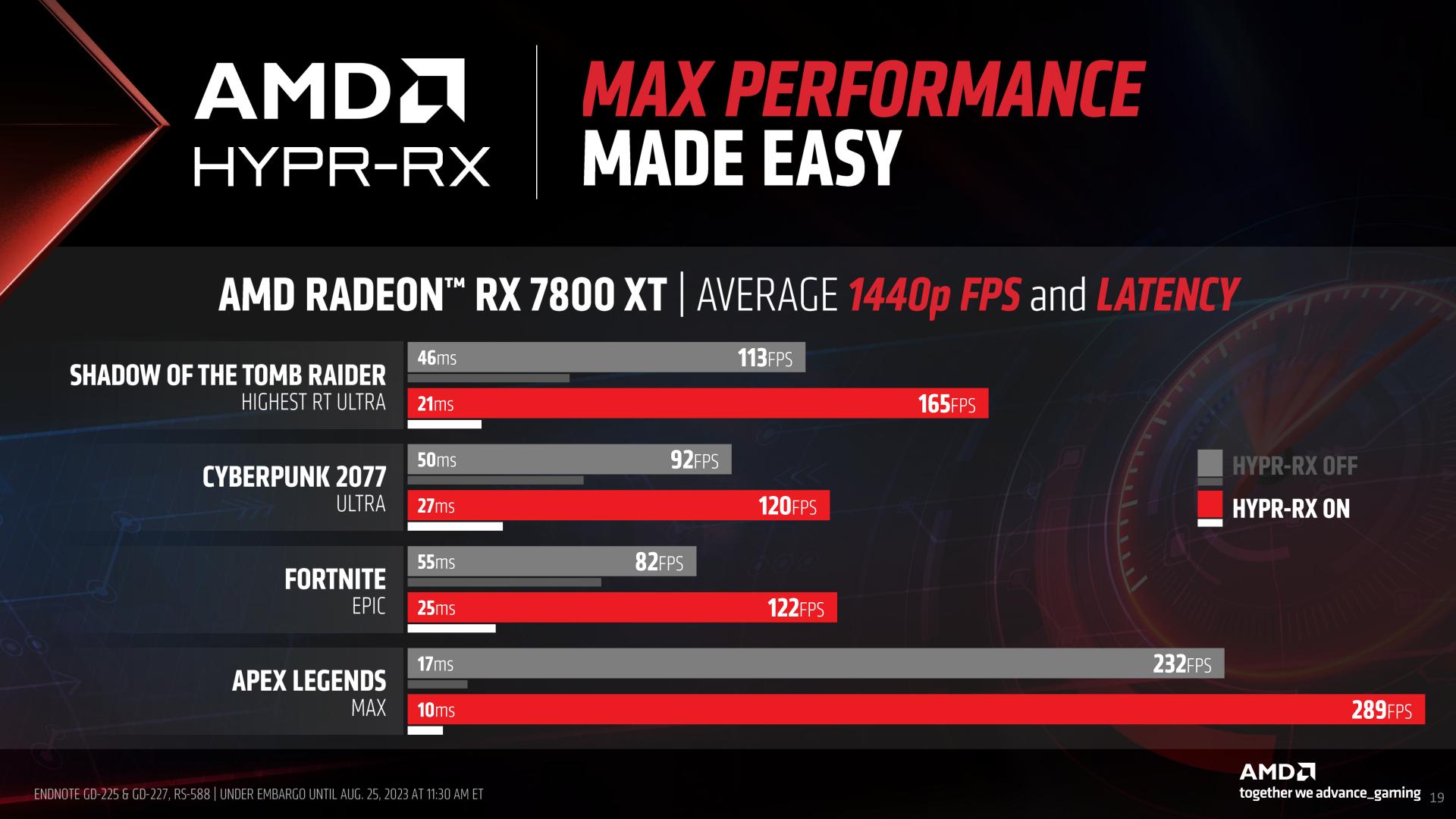









43 Comments
View All Comments
Yojimbo - Tuesday, August 29, 2023 - link
No it's not. Just look at the Alan Wake II screenshots above. The rasterized to path traced images represent a generational shift in image quality (like going from PS4 to PS5). There's no way to get that path-traced image quality and performance through devoting all the transistors to rasterized graphics. You couldn't even come close.CiccioB - Tuesday, August 29, 2023 - link
It depends on what you mean with "efficiency".RT is inefficient with respect to rasterization up to a certain quality level.
Beyond that level, ray tracing is the only way to get an image with a quality that classic rasterization cannot achieve.
Moreover ray tracing, from the point of view of the developer, is a blessing, for many reason.
First because it doesn't need to "optimize", that is continuously find tricks to get around performance issue for certain effects.
Moreover, a pure RT engine can evolve in time together with the HW, so it would be possible to keep old games at top image quality without having to create "remastered" versions of it.
Pure RT rendering engines are still far away in time for sure. But we have reached a point were pure rasterization and all the tricks it requires are no more better in quality, development time and calculation time than partially ray traced parts of the image.
I know that still having GPUa that can't keep the pace of the leader in terms of ray tracing power, makes someone think that RT is just an unneeded plus. But I bid my money that as always in the past, as soon as the underdog become capable of the same performance (or near it) as the competitor, its fans will find RT as the best thing after sliced buttered bread, speaking of rasterization as the "obsolete way to get things fixed" (if you know what requires having a complete scene rendered without glitches in a free roaming world where the user can look at it in many different ways. Of course limited games like COD can still be done with pure rasterization and none will ever notice a problem (nor an improvement too).
Zoolook - Saturday, August 26, 2023 - link
Blame Nvidia, they are introducing these stupid quantity over quality "features", unfortunately AMD has to follow because of the average GPU buyers indifference to graphical fidelity.I wish they could spend all those resources on actual improvements instead.
Yojimbo - Saturday, August 26, 2023 - link
AMD has to follow because GPU buyers want greater image quality.Qasar - Sunday, August 27, 2023 - link
" AMD has to follow because GPU buyers want greater image quality."sorry but dlss/fsr, doesnt do that, it IS a crutch, as stated above, the 4060 with dlss gives the performance the 4060 SHOULD of had with out it.. the ONLY 40 series card that is actually worth the price for the performance it gives, is the 4090, the rest are crap.
CiccioB - Tuesday, August 29, 2023 - link
"the 4060 with dlss gives the performance the 4060 SHOULD of had with out it"Yes, that board it is called 4070Ti, which has a different price and power consumption.
As 4060 has NOT 4070Ti rendering capabilities in order to gain the same FPS with same image quality without DLSS, then DLSS is needed.
Or you have to cut on rendering features, like illumination, light effects, rendering distance and so on.
If you think 4060 is really that bad, but the 4070/ti or a equivalent priced AMD and use the limited raster only rendering engine with them (and of course be prod to do it in native resolution, not scaled). Twice the power consumption.
JasonMZW20 - Monday, August 28, 2023 - link
The only things that provide better image quality are: DLAA and now FSR3 Native AA.Upscaling never looks better than native. The two solutions above clean up potato-tier TAA to make the final image much closer to what native should be at all times.
Unfortunately, people really do believe the "better-than-native" image quality narrative. No, DLSS and FSR are just better at TAA than game implementation and remove the potato TAA from the equation entirely. It's a false equivalency, as an upscaled image is always softer/blurrier than a natively rendered one, especially without TAA. DLSS tries its best, but there's still missing information per-pixel. It's close enough that people will take the extra framerate.
Yojimbo - Tuesday, August 29, 2023 - link
No, all resources are scarce. You are operating under a false assumption that somehow you could have the same features and just cut out the upscaling and result in something that looks better. While it is true that an image rendered with DLAA in native resolution will look better than one that is upscaled, such a solution would result in much lower performance. Once a performance target is set, the best image quality is achieved by increasing quality-improving graphics settings (such as path tracing, but it also holds true for entirely rasterized graphics) and using DLSS upscaling rather than having lower-quality graphics settings run entirely in native resolution.PeachNCream - Friday, August 25, 2023 - link
I feel bad for people that stick the letter "R" at the end of the word "game" and fancy themselves chasing after computer hardware at great personal cost. It hasn't been such a good time for people that have difficulty triggering the reward response in their brain other ways. Addiction is a terrible thing.Yojimbo - Friday, August 25, 2023 - link
Think of all the greens fees people pay. Hi-Fi stereos. Quadcopters and GoPros. Skateboards with fancy wheels. Land for a garden. Espresso machines. Hobbies are the scourge of man.